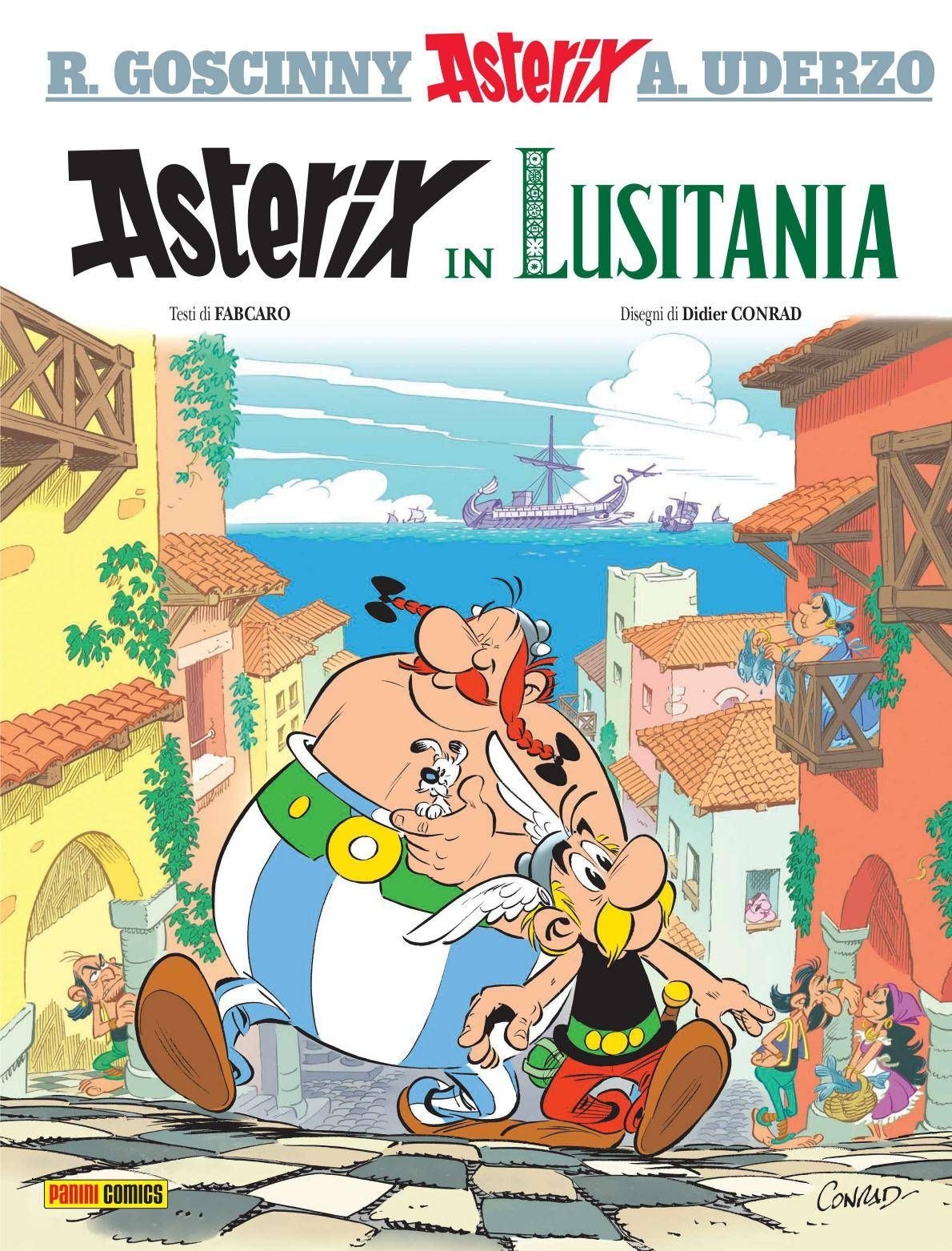Asterix lands in Lusitania, the new album of the saga arrives in Italy.

After sixty-six years of travels across Europe, the Mediterranean, and beyond, Asterix and Obelix, accompanied by their faithful Dogmatix, return to amaze fans with a new adventure. The 41st album of the celebrated saga, "Asterix in Lusitania," published by Panini Comics, will be available in Italy on Thursday, October 30th. This new release marks a long-awaited chapter: for the first time, the Gaulish heroes will venture into the region of ancient Lusitania, corresponding to present-day Portugal, a land of ancient history and breathtaking landscapes.
The choice of Lusitania, explains screenwriter Fabcaro, pen name of Fabrice Caro, author of the new album along with illustrator Didier Conrad, was almost natural: "We needed to find a destination our friends had never been to. I wanted a sunny, bright book, set in a country not too far away but still suggesting a vacation. Portugal immediately caught my imagination: a country I know and love, with warm and hospitable people."
Didier Conrad agrees: "Visiting Portugal has always fascinated me. I love drawing picturesque landscapes and incorporating little allusions to the local culture into my drawings. In Lusitania, the country's historical and cultural richness offers irresistible inspiration." The album's cover perfectly reflects this spirit: pastel tones blending pink, yellow, and orange, cod drying in the sun on balconies, the black and white cobblestones typical of the Portuguese street, and a sweeping view of the port, the hub of urban life. In the foreground, Asterix observes the landscape curiously and determinedly, while a couple of Lusitanians in love and a shady character named Malafedes hint at romantic plots and impending tensions.
As per tradition, each travel album in the saga is a unique blend of adventure, comedy, and national stereotypes, treated with affection and irony. The encounter with the Portuguese people is no exception: through words and images, Fabcaro and Conrad play with the region's typical characteristics, from culinary customs to everyday gestures, maintaining a benevolent yet ironic perspective.
The central theme of the new album is closely tied to a profoundly Portuguese sentiment: saudade, a bittersweet melancholy, untranslatable and poetic, combining nostalgia, hope, and lightheartedness. The choice is no coincidence: "We wanted to capture an emotion capable of representing the Lusitanian identity. Saudade, with its mix of sadness and poetry, is perfect," explains Fabcaro. It's no coincidence that the story tells of Viriathus, the famous Lusitanian leader who between 150 and 139 BC led the resistance against the Roman invasion. The figure of Viriathus, heroic and tragic, becomes the symbol of a people marked by heroism and betrayal, which is reflected in the melancholy of saudade. Viriathus managed to inflict numerous defeats on the Romans and control almost all of Lusitania, similar to the resistance of the Gauls led by Vercingetorix. Despite his brilliant strategy, he was betrayed by three of his men and murdered in his sleep. This historical episode becomes one of the narrative keys of Asterix in Lusitania, suggesting how betrayal and heroism can coexist, inspiring the feeling of melancholy that characterizes the Lusitanians.
Every Asterix adventure is marked by memorable antagonists, and in Lusitania, tradition is no exception. Malafedes, accompanied by the centurion Degustibus, will be the new threat to our heroes. The character is inspired by British comedian Ricky Gervais, who appears under a portico on the cover with a sinister air. The inclusion of contemporary or famous figures in Asterix comics is a long-standing tradition, begun by René Goscinny and Albert Uderzo—the creators of Asterix in 1959—and continued with names like Sean Connery, Johnny Hallyday, and Michel Houellebecq. (by Paolo Martini)
Adnkronos International (AKI)





